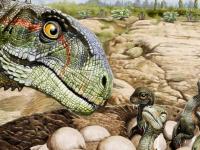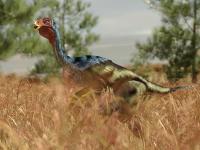Paleontologists Trace Evolution of Whales, Find Fossils in Indian Sub-continent

About 50 million years ago, the Indian subcontinent was drifting closer to Asia and squeezing out the Tethys Sea along its northern fringes.
The sea was home to some of the oldest mammals of the world and recent studies by Indian scientists has proven that.
Paleontologist Vijay Prakash Mishra and his mentor 78-year-old Ashok Sahni worked on a plan to study the fossils along the flat-topped hills in Kutch, Gujarat after reports of large skulls in the area surfaced in 1973. Mishra discovered some abnormally large fossils at the silvery, salt-crusted desert.
Mishra said, the fossils were distinctly mammalian but far more primitive than similar fossils found elsewhere. The discovery was the first of its kind in India as these were ancestral remains of the biggest animal on earth, those belonging to the order of aquatic mammals called cetaceans, comprising whales, dolphins and porpoises.
In a separate study carried out by Sunil Bajpai, a palaeontologist at IIT Roorkee, he said the real whale story begins about 47-48 million year old rocks in Pakistan and India which documents the transition of a whale-like mammal from land to water.
Bajpai began his study in the 1980s when geneticists had just traced whales to hoofed mammals. Fossils found in northern Pakistan and Kashmir and Kutch in India confirmed that dolphins and whales were more closely related to hippopotamuses and cows than to sharks and sardines.
Mishra and his colleague Hans Thewissen, a Dutch-American palaeontologist, looked around bright red and yellow rocks in Kutch belonging to a geological epoch called the Eocene which was a time of balmy global weather. The habitat at that time had leafy riverbanks and was a comfortable set-up for a cat-sized, deer-like hoofed mammal known as the Indohyus – the Indian pig.
In the 1980s a territorial Indian geologist, A. Ranga Rao collected loads of fossils from Kalakot in Kashmir, including that of Indohyus which was later passed on to Thewissen in 2005 through Rao’s widow.
Thewissen’s fossil handler accidentally broke off a walnut-shell-like bone while chipping at the Indohyus relic. The bone was an involucrum, a bowl-shaped ear bone that bore similarities with that of whales.
The discovery was the first link to whale’s evolution even though the hoofed, land-dwelling herbivore looked nothing like streamlined, new-age whales. Indohyus was probably one of the earliest, four-legged whale ancestors to dive into water for survival.
Further studies unveiled how other ancient animals then evolved from the sharp-toothed Pakicetus to otter-like Ambulocetus, and to short-limbed Remingtonocetus.
Speaking to The Wire,Thewissen said, the earliest ones really looked more like wolves than like whales and later there were ones that looked like crocodiles. Then there were whales that looked more like seals or sea lions and otters.
Source: www.news18.com/








